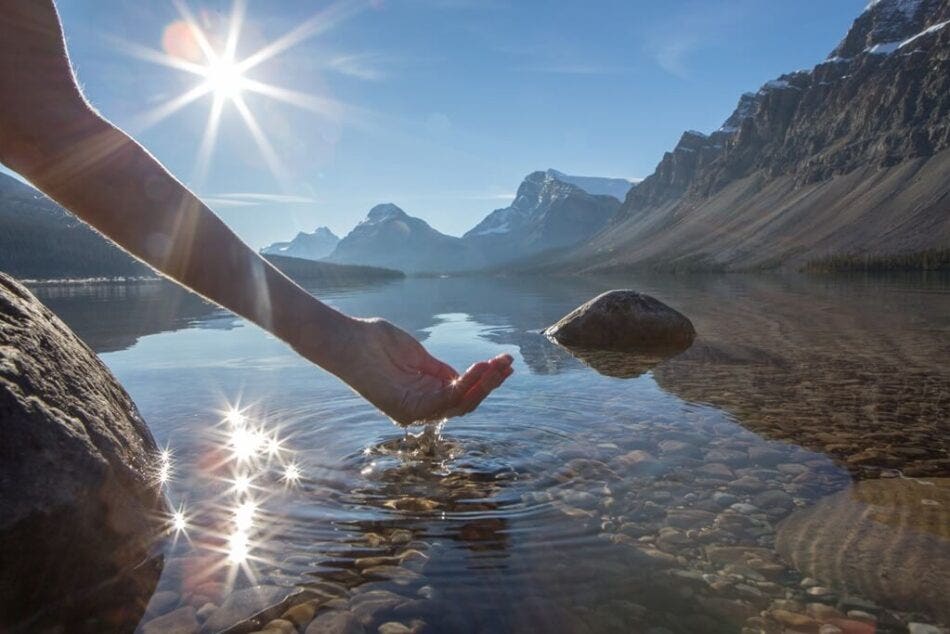Alberta is fortunate to have abundant lakes, rivers, wetlands, and groundwater. It’s important to protect these water sources to ensure everyone has access to potable water and our ecosystems can thrive. Camping can have a direct impact on water sources, especially when you’re in the backcountry. Here are a few ways you can protect water when camping in Alberta:
- Camp at least 100 meters from water.
- Wash up safely.
- Dispose of your waste properly.
- Clean your boats and water gear.
- Swim clean.
We’ll discuss each item in more detail below.
Camp at Least 100 Meters from Water
Ideally, you should be camping in a designated campsite. However, if you’re backcountry camping in a Public Land Use Zone or on private land in Alberta, you may need to find your own campsite.
Set up your tent or RV at least 100 meters from any water source. This will also make it easier for you to keep camping related contaminants out of the water.
Wash Up Safely
Soap, detergents, toothpaste, and other products can cause harm to water wildlife and pollute the water source itself. Wash up safely by following these best practices:
- Don’t bathe in a water source.
- Don’t wash your dishes, clothes, or anything else in a water source.
- Do all washing at least 70 meters away from a water source.
- If you can’t dispose of grey water in your RV or pit toilet facilities, pour it onto vegetation at least 70 meters from a water source.
- Use biodegradable soap and use as little as possible.
Dispose of Your Waste Properly
Human waste and garbage can pollute a water source and harm wildlife. If there are no waste disposal facilities, pack out all garbage with you. Do not bury or burn your garbage.
If there are no washroom facilities or pit toilets (and don’t have an RV washroom or compostable toilet available), ensure that you are going to the bathroom at least 100 meters away from any water sources. You should dig a hole at least 15 centimetres deep. Loosely fill the hole with soil afterwards. Use as little toilet paper as possible and you should pack it out.
If you are unable to dig a hole (such as in winter), you should pack out all waste.
Ensure you’re picking up your pet’s waste and avoid letting them use the bathroom by a water source.
Clean Your Boats and Water Gear
You should always clean your boat and water gear in-between uses in different bodies of water. This helps prevent the spread of diseases and other things that can harm a water source and wildlife.
Swim Clean
If you’re planning to swim in a water source, make sure you’re clean before you go in. Sunscreen, bug spray, deodorants and other products can damage water sources. If you must wear sunscreen or other products, choose biodegradable options. For example, you can use mineral sunscreens (which also have the benefit of feeling less greasy on the skin).
Safe Water Practices
Remember, never assume water is safe to drink. Always treat or boil water for drinking, cooking, or any other task where you may consume the water. Packing in your own water may be the easiest option if there are any concerns over water supply.

